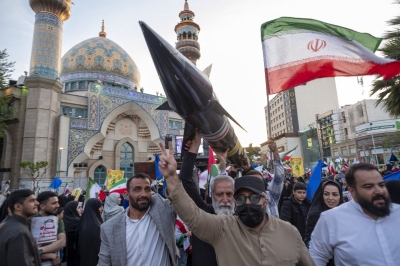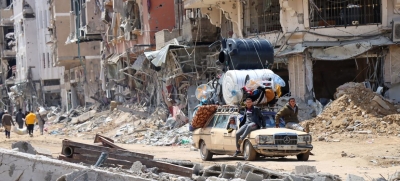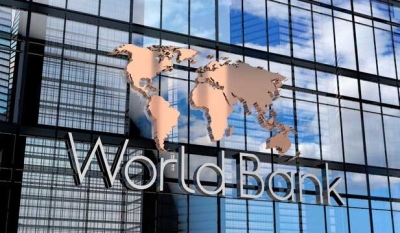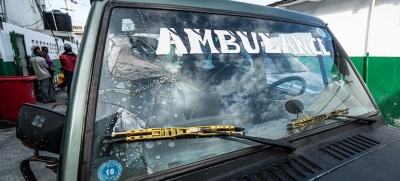BANGKOK, Thailand, Feb 12 (IPS) — Let’s call her Anita. Four years ago, her life took an unexpected turn when the COVID-19 pandemic disrupted everything she knew. As businesses closed and economic uncertainty loomed, Anita, like countless others, found herself forced out of work. Providing for her three young children became a daily struggle, prompting her to seek informal work as a subsistence agricultural worker to ease the financial burden.
Just as Anita began to rebuild her life, hoping for a semblance of normalcy, climate change left Anita’s village facing the worst drought in decades, destroying the crops on which they survived. With no social protection for informal workers like Anita, the aftermath left her grappling with the devastation, both emotional and economic.
Yet, through it all, Antia’s resilience shone bright. She sought opportunities, determined to shield her children from the harsh realities they faced.
However, the challenges did not cease. Against a backdrop of rising geopolitical tensions and global climate shocks, food prices began to soar. Anita, despite her tenacity, found it increasingly difficult to put food on the table for her children. In a difficult situation, Anita reached out for assistance, seeking a loan to navigate the financial hurdles.
Yet, discriminatory legal frameworks and gender norms prevented Anita from accessing the financial lifeline she desperately needed, pushing her further into poverty.
Anita’s story is not an isolated case. Since the onset of the COVID-19 pandemic, more than 165 million people globally have fallen (back) into poverty, with an additional 75 million more people living in extreme poverty, on less than USD $2.15 a day. It is estimated that 8 per cent of the world’s female population (342.4 million women and girls) will live on less than $2.15 a day by 2030 if current trends continue.
In the Asia-Pacific region, existing gender poverty gaps have widened, particularly in South Asia which is forecast to have 129 women in the 25-34 age group living in poverty for every 100 men by 2030, rising from 118 women to every 100 men in 2021.
Yet, while recent polycrises have reversed hard-won gains towards poverty eradication, strengthening institutions and financing with a gender perspective can get us back on track to eradicate extreme poverty and close the growing gender poverty gap.
A policy simulation analysis using the International Futures Model estimates that nearly 150 million women and girls globally could be lifted out of poverty by 2030 with increased spending on social protection, investments in the green economy, better infrastructure and education.
Pooling resources for these investments is achievable through a combination of public and private financing mechanisms, ensuring gender mainstreaming in all economic policies and interventions.
Strengthened gender-sensitive public institutions play a pivotal role promoting gender equality in all spheres, supported by investments in women’s leadership and political participation, alongside institutional initiatives aimed at overcoming biases and stereotypes.
With this compelling case, has there ever been a more important moment in history for multilateral collaboration and action than now? For many voices at the just concluded Asia-Pacific Regional Consultation on the 68th Session of the Commission on the Status of Women (CSW68), the call to action rang equally loud and clear.
Participants from diverse backgrounds shared valuable contributions and insights on accelerating the achievement of gender equality and the empowerment of all women and girls by addressing poverty and strengthening institutions and financing with a gender perspective.
While noting the challenges, they shared innovative solutions to strengthen the policies and institutions and develop innovative new sources of financing for women’s economic empowerment. These included promoting access to finance for women-owned small and medium-sized enterprises, and policies and programmes to reduce poverty and vulnerability by promoting labour markets.

The two-day regional consultation resulted in a set of suggested actions highlighting the importance of addressing the interconnections between gender, poverty, and economic inequality, and stress the significance of regional collaboration, involving governments, civil society, the private sector, and other stakeholders.
These suggested actions will contribute towards the set of agreed conclusions for member States to take under advisement at CSW68 that will take place from 11 to 22 March 2024 in New York.
It is now that the global community must come together in solidarity, for the benefit of the most vulnerable population groups, to make good on the promise of the 2030 Agenda for Sustainable Development, to leave no one behind.
Disclaimer note: Anita’s story is inspired by real accounts of women experiencing poverty in the Asia-Pacific region. However, the story has been fictionalized for narrative purposes, and any similarities to real individuals or events are purely coincidental.
Jessica Henn is Consultant, SDD, ESCAP; Channe Lindstrom Oguzhan is Social Affairs Officer, SDD, ESCAP; Angie Elizabeth Carrion Cueva is Intern, SDD, ESCAP
Relevant SDGs: 1, 5, 10, 17
IPS UN Bureau






